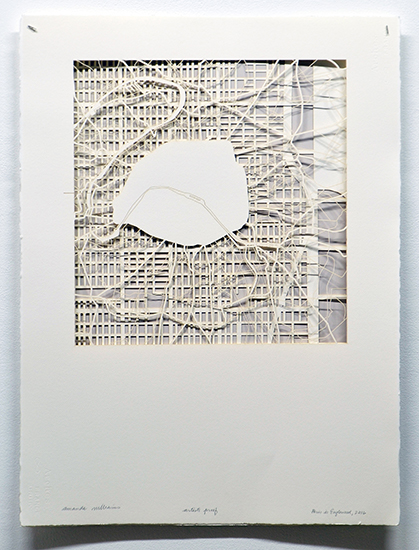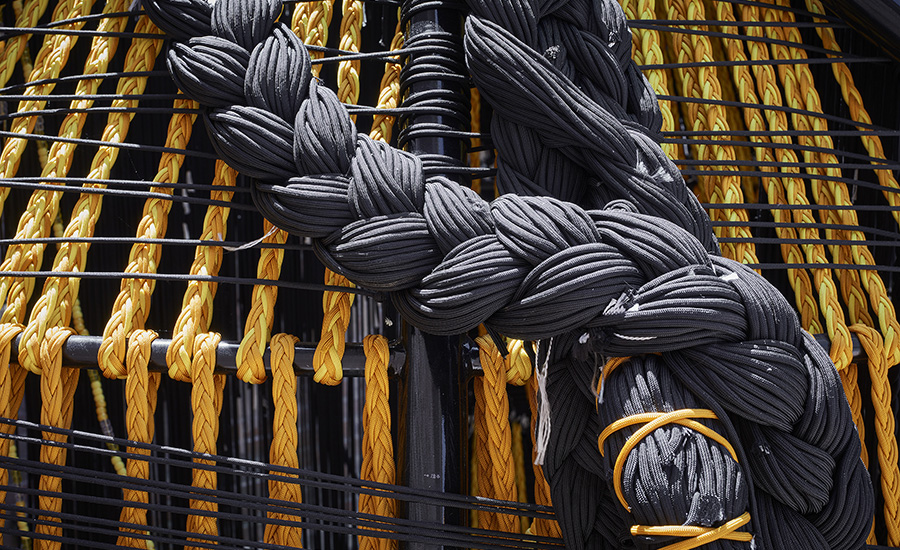From artist Amanda Williams’ perspective, the brutality experienced by Black people at the hands of the police is nothing new. To her, it’s “just another day, just like it’s been for the last 45 years of my life.” What does feel new now, however, is the widespread outrage and protest that George Floyd’s killing—and other acts of police violence—have prompted around the world. “All of a sudden it’s become urgent for everyone else. That seems very strange and foreign, and kind of like a dream.” Williams, who earned her B. Arch. from the Cornell University School of Architecture, Art, and Planning (AAP), deals with the complexities of race, place, and value in her work, which has been featured in the U.S. Pavilion of the 2018 Venice Architecture Biennale, the Museum of Contemporary Art in Chicago, and the 2016 Chicago Architecture Biennial. The realities of systemic racism that much of the world has just awoken to are the constants in both her art and daily life.

Based in Chicago, where she was born and raised, Williams was aware of the relationship between race and urban design from a young age; a fact that shaped her path as an artist. “Chicago is one of the most segregated cities in the United States. When you grow up in a place like this, where there are invisible lines that you should not cross, places that don't belong to you, then your whole perception of the way the world operates is the grid,” she says. “Architecture seemed like the vehicle that made sense to tell these stories [about race], because architecture formed who I was. My limitations and movements were formed by planners, designers, and society telling me that there were places that I should and should not be before I was even born.”
But many white Americans are only now becoming aware of the racism that underlies much of the built environment. “It's a metastasis baked into every kernel, from planning and zoning, to multi- and single-family housing, and conversations about public and private space,” she says, pointing out the disconnect between “all these folks who were oblivious to their privilege, but can't avoid it in this moment,” and “the people for whom this has been so obvious, because they didn't have the luxury to walk away from it.”

“It's extremely painful to have to admit that most of the country was built on unpaid or low-wage labor,” she continues. “But when you bring in a group of people to be free labor, and then emancipate them after the physical ground they walk on has been divvied up and given to everyone else, then literally, there's nowhere for Black lives to be, so of course they don't matter.”
Silence, apathy, or excuses from colleagues and friends, she says, reinforces the cancer of systemic racism. “Responses like ‘I don’t see color,’ or ‘I have a lot of Black friends,’ sound absurd when they’re said out loud, but they really are the sentiment of most people in our profession—and across corporate and governmental structures,” she says. “Because fundamentally, we’re talking about a redistribution of your resources, and who wants to give that up? Even if they're unearned, or you didn't realize that you earn them because of some kind of privilege you weren't aware of, who wants to give that up?”
A question on the minds of many of those who are newly aware of their privilege, and of the systemic racism that granted it, is "What can I do now? How do I fix this—now?” There’s not a simple answer. In fact, those questions in themselves imply two things, says Williams: “One is that urge to want to act, which is admirable, and which I share. The second is the assumption that there is an answer—some thing that is actionable. But those are both falsehoods.”
“Nobody wants to hear the answer, but what you need to do now is the work,” she says. “You've got to do the reading, you’ve got to have the tears—by yourself. You’ve got to understand why it happened, and then make personal decisions. So, it's going to be different for everybody.”

“The work is painful, and the work is long,” she says, which also prompts the question: “do we have the attention span?” But it doesn’t stop with the individual; schools and firms have their own work to do. “In academia, we know that it's also a money issue—right? You have to fund the schools, so we have kids who are smart enough to pass the tests, and who have the interest to go into the programs; then, they have to get financial aid to stay there,” she explains.
"But we knew all that before George Floyd,” she says. “The part we don’t know is whether or not white people are ready to do the homework, to understand what I’m talking about. So if you read this, and you think it's strange that I say that ‘it’s a metastasis built into every kernel,’ then you probably are the problem. You probably have to go back and read.”

Institutions must be ready to commit to conversation and action, “but if they're not ready, then they have to say they're not ready, and that's painful,” Williams acknowledges. “Whether it’s a museum or a company, there needs to be a deep reckoning of individuals within every department. They need to start at ground zero to understand race relations, understand how that impacts the built environment, and then throw that into their individual projects and practices.”
In firms, she mentions the need for mentorship and programs to counter this implicit bias. “They have to fold these issues into their day-to-day, whether that's technology, history, or material science, because all of those things have roots in and connections to power, equity, and—in the United States—race.”
Most importantly, white architects, in academia or practice, must be advocates. “It is not my job to advocate for why you have no Black students in your class,” Williams says. “That should be an outrage. People should be confused! I don't understand how you can have a conversation or lead a studio about any major American urban center without one person there from that environment, who can give you a different perspective.”
Without those perspectives, she asks, “Just whose Black lives matter to you? Whose Black lives are you talking about? If you can't see them, then that is the problem.”






Post a comment to this article
Report Abusive Comment